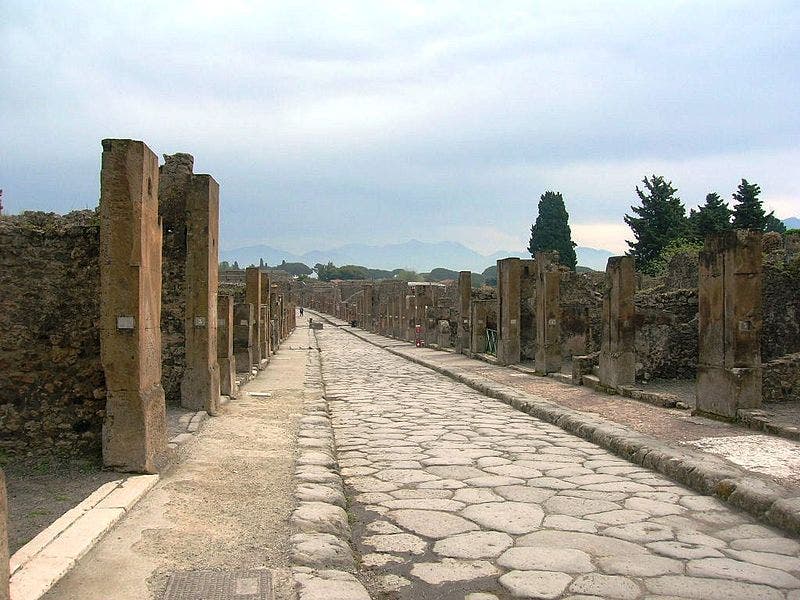Few natural events have been as devastating and as well-studied as the Vesuvius eruption which destroyd the Roman city of Pompeii. Even the date — 24 August 79 AD — has been inscribed as a dark stain in history. But the date itself might be a bit more smudged than we thought. Archaeologists working in Italy found an inscription dated to mid-October, which might push the date back by a couple of months.

Mount Vesuvius, a stratovolcano in modern-day Italy, erupted in 79 AD, becoming one of the most catastrophic eruptions in history. It spewed a cloud of super-heated tephra and gases to a height of 33 km (21 mi), releasing 100,000 times more energy than the Hiroshima-Nagasaki bombings. Ultimately, several Roman settlements were destroyed including, most famously, the cities of Pompeii and Herculaneum.
Pompeii was once a prosperous and populous town which was completely abandoned after the eruption, only to be rediscovered in 1599, when the digging of an underground channel ran into ancient walls covered with paintings. Now, Italian archaeologists have found an inscription dated to October, 79 AD, indicating that the eruption may have happened a couple of months later than the “official” date.

Although it is just a single inscription, given the nature of the event, there’s almost no way that the inscription would have been made after the eruption. The inscription is nothing more than a scrawl in charcoal, but it’s enough. Archaeologists also don’t think this is a dating error.
“Since it was done in fragile and evanescent charcoal, which could not have been able to last long, it is highly probable that it can be dated to the October of AD 79,” the archaeology team said in a statement.
This isn’t the first piece of evidence to suggest that the eruption took place in October. Previous studies have shown that people buried in the ash appear to have been wearing thick clothing — something which you wouldn’t have really done in Italy’s warm August. Furthermore, excavations have revealed several fermenting jars, which would have happened around the end of October.
The previous date came from Pliny the Younger, one of the leading lawyers and writers at the time, who witnessed the event firsthand. He wrote about the events.
“On the 24th of August, about one in the afternoon, my mother desired him to observe a cloud…” he wrote in a letter to Tacitus, a Roman senator and historian, about the events of that day.
But the letter was written some 20 years after the event, and the original document was never found — instead, archaeologists uncovered translations and transcriptions which were made over the centuries. In fact, various copies of the letters have different dates ranging from August to November, the confusion likely caused by the different systems of counting days.
The new proposed date is the 24th of October.
Was this helpful?



